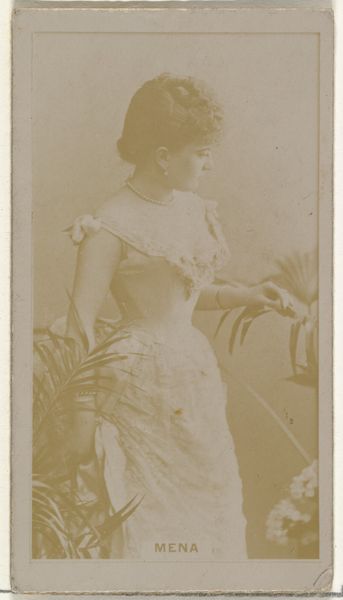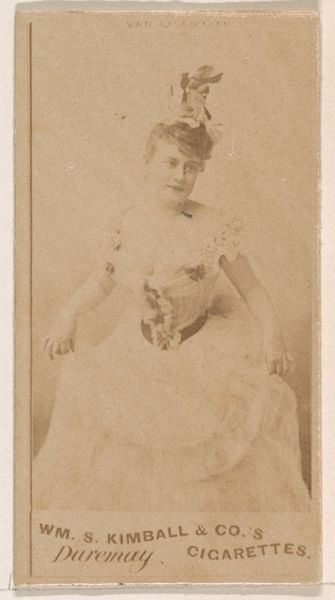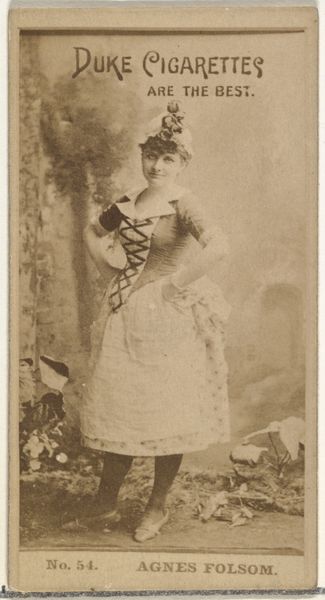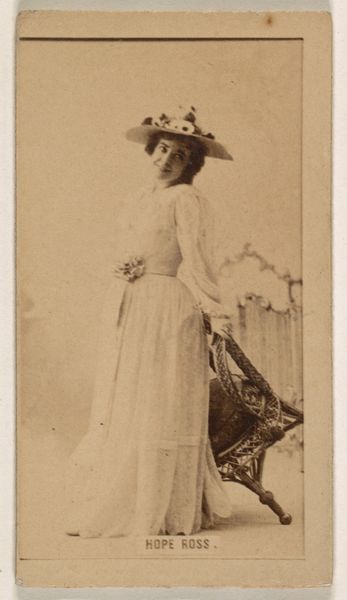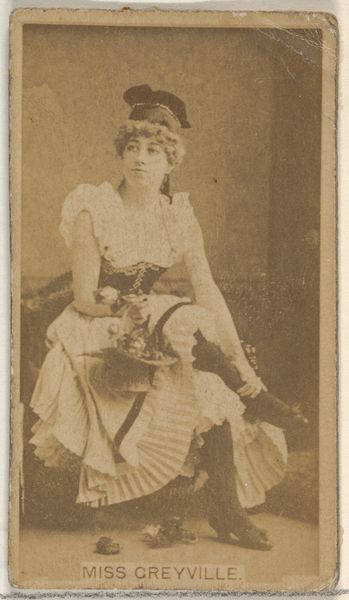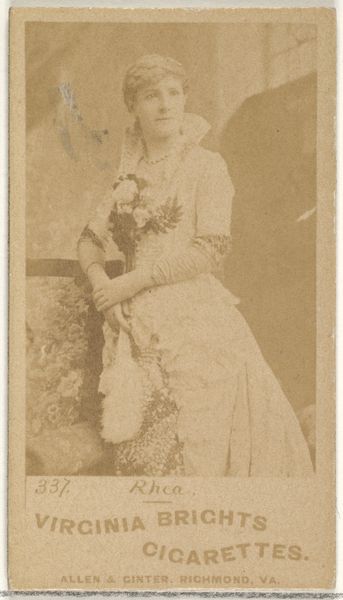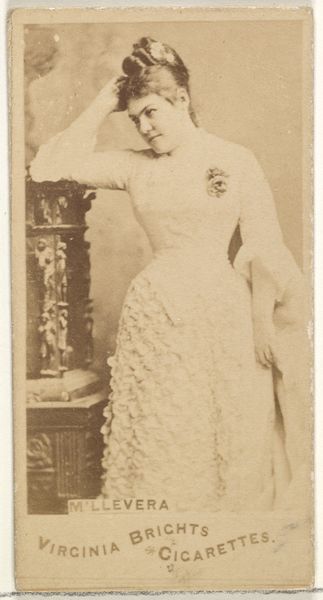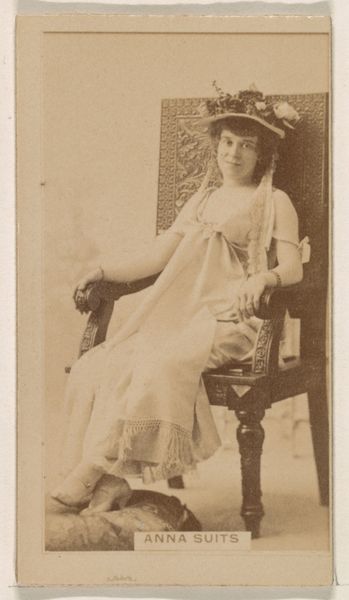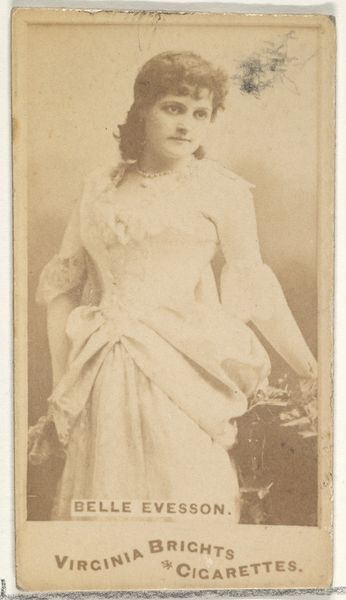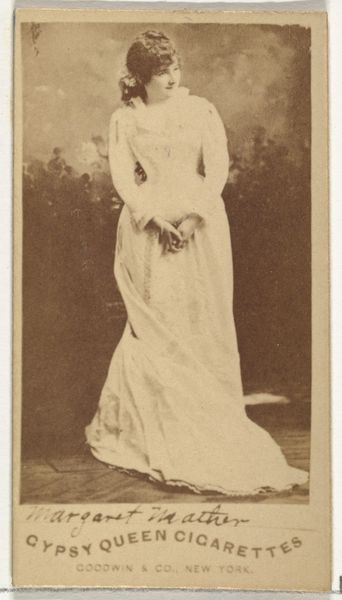
Miss Rubens, from the Actresses series (N203) issued by Wm. S. Kimball & Co. 1889
0:00
0:00
drawing, print, photography, albumen-print
#
portrait
#
drawing
# print
#
charcoal drawing
#
photography
#
albumen-print
Dimensions: Sheet: 2 5/8 × 1 3/8 in. (6.6 × 3.5 cm)
Copyright: Public Domain
Editor: So this albumen print is called "Miss Rubens," created in 1889 by Wm. S. Kimball & Co. She looks like she's in a vulnerable, almost melancholic pose. What stands out to you about it? Curator: What interests me is how this portrait, seemingly innocuous, operated within the social dynamics of the late 19th century. Cigarette cards like these were immensely popular, often featuring actresses and other women who were both celebrated and objectified. Think about how this image circulated – distributed with cigarettes, primarily consumed by men. What does it mean to commodify a woman’s image in this way? Editor: So you’re saying it's not just a pretty picture; it’s part of a bigger system? Curator: Precisely. It reflects societal attitudes towards women, especially those in the public eye. Their image was used to sell a product, reducing them to a spectacle for the male gaze. This kind of commercialization perpetuates unequal power dynamics. Also, consider the title: "Miss Rubens". Are we invited to compare her physique to that of women painted by Peter Paul Rubens, the famous baroque painter? How do we read her through that reference? Editor: That makes me see it in a different light. It’s more than just a portrait; it's a reflection of how women were perceived and used in advertising at the time. Curator: Exactly! Examining such imagery helps us understand the historical roots of objectification and how these representations continue to shape contemporary perceptions of gender and identity. We should ask, whose story is this photograph really telling, and what power structures are at play? Editor: It's really interesting to consider this as a cultural artifact with embedded social meanings rather than just an image of a woman. Curator: I'm glad it was helpful and provided a better understanding of such artistic and historical significance.
Comments
No comments
Be the first to comment and join the conversation on the ultimate creative platform.

